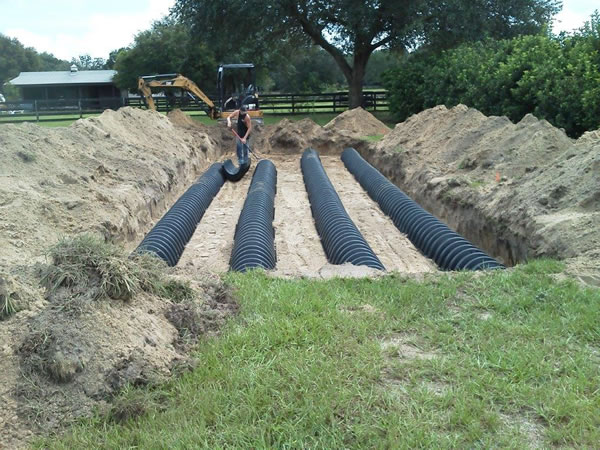Drainage Field Problems
Read More
Schedule Online
919-446-4099

Apr 03, 2023
A lot of residential and business sites require septic systems. They are made to dispose of wastewater from houses and buildings in a safe and effective manner. Unfortunately, septic systems are susceptible to clogging and overloading with time, which can result in a number of issues like sewage backup, bad odors, and even environmental contamination.
A clogged or broken leach field is one of the most typical problems with septic systems. The leach field is a crucial component of the septic system since it is in charge of cleaning and filtering wastewater before it mixes with the soil around it. The septic system can no longer operate properly when the leach field is blocked or damaged, and leach field rejuvenation may be necessary to fix the issue.
In this blog post, our professionals from Septic Blue of Raleigh will go into more detail about what a leach field rejuvenation is.
In order to rejuvenate a blocked or damaged leach field, its proper operation must be restored. The procedure often consists of numerous steps, such as:
Septic tank pumping: Before the leach field rejuvenation process can begin, the septic tank must be pumped to remove any solids or sludge that may have accumulated inside. This makes sure that during the rejuvenation process, the leach field won't be flooded with effluent.
Leach field inspection: Following septic tank pumping, the leach field is examined to gauge the degree of any damage or obstruction. The leach field may need to be dug up during this examination so that the soil and pipes may be examined visually.
Analysis of the surrounding soil: The soil's ability to absorb moisture is examined. This knowledge is essential for selecting the best strategy for reviving the leach field.
Repair or replacement of damaged pipes: If the leach field is clogged due to damaged or collapsed pipes, these pipes must be repaired or replaced to allow for proper drainage of wastewater.
Installation of a leach field rejuvenation system: In some circumstances, a leach field rejuvenation system may be implemented to improve wastewater filtering and boost soil absorption. To encourage drainage and the development of helpful microorganisms, this technique may involve injecting air or water into the soil.
When a septic system can no longer function properly owing to a congested or damaged leach field, leach field rejuvenation is required. The septic system can overflow with wastewater when the leach field is not functioning properly, causing sewage backlog, offensive odors, and even environmental contamination.
In comparison to replacing the entire septic system, which may be costly and time-consuming, leach field rejuvenation is a more affordable option. Property owners might avoid the difficulty and expense of establishing a new septic system by restoring the leach field's correct operation.
The size of the septic system, how many people use it, and how old the system is all affect how frequently leach fields need to be rejuvenated. In order to avoid congestion and harm to the leach field, property owners should generally have their septic system inspected and pumped every three to five years.
Are you in need of a septic tank repair? Luckily, we at Septic Blue of Raleigh have dedicated workers ready at your service. Contact our representatives for more questions.